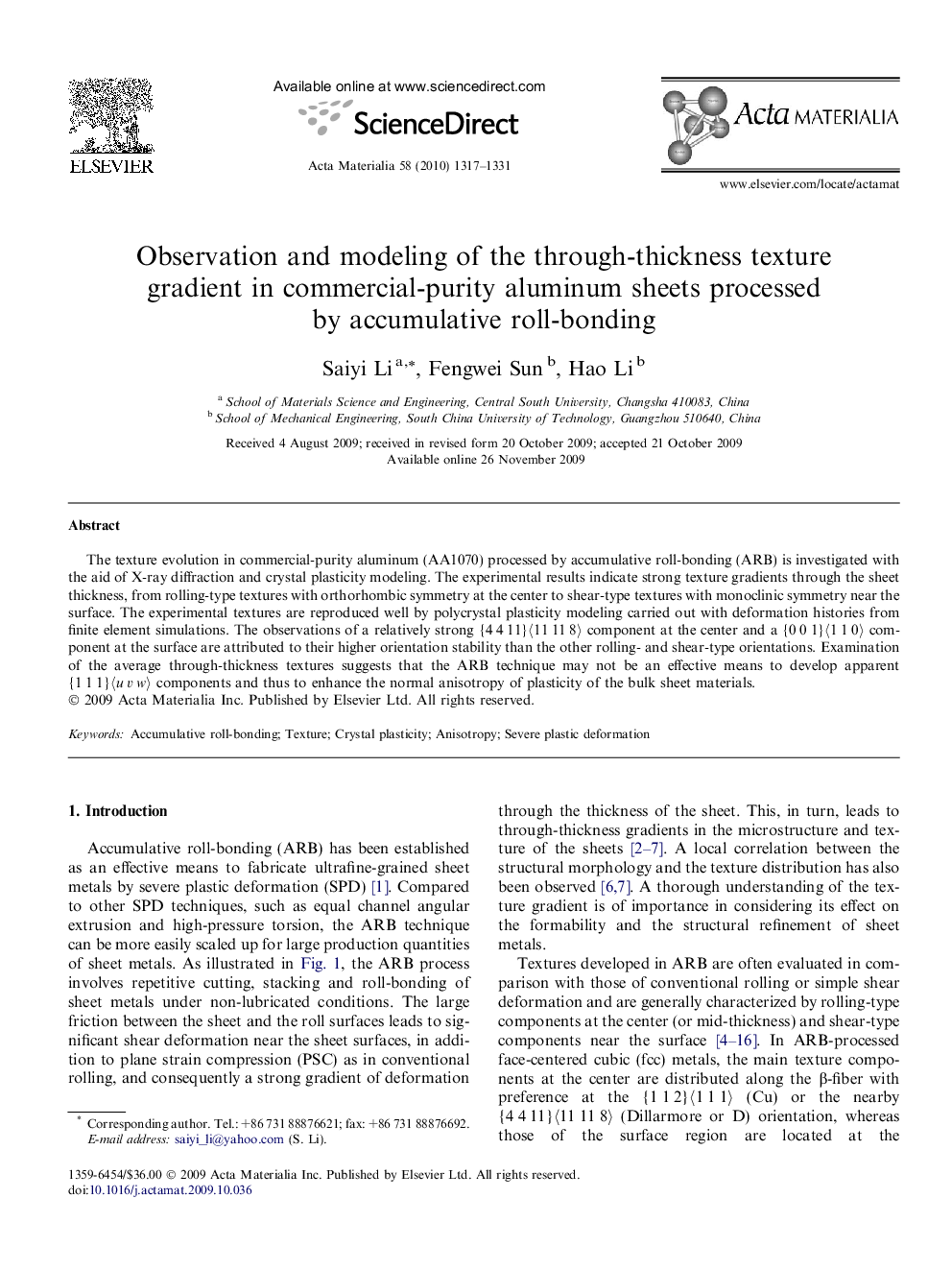| Article ID | Journal | Published Year | Pages | File Type |
|---|---|---|---|---|
| 1448425 | Acta Materialia | 2010 | 15 Pages |
The texture evolution in commercial-purity aluminum (AA1070) processed by accumulative roll-bonding (ARB) is investigated with the aid of X-ray diffraction and crystal plasticity modeling. The experimental results indicate strong texture gradients through the sheet thickness, from rolling-type textures with orthorhombic symmetry at the center to shear-type textures with monoclinic symmetry near the surface. The experimental textures are reproduced well by polycrystal plasticity modeling carried out with deformation histories from finite element simulations. The observations of a relatively strong {4 4 11}〈11 11 8〉 component at the center and a {0 0 1}〈1 1 0〉 component at the surface are attributed to their higher orientation stability than the other rolling- and shear-type orientations. Examination of the average through-thickness textures suggests that the ARB technique may not be an effective means to develop apparent {1 1 1}〈u v w〉 components and thus to enhance the normal anisotropy of plasticity of the bulk sheet materials.
